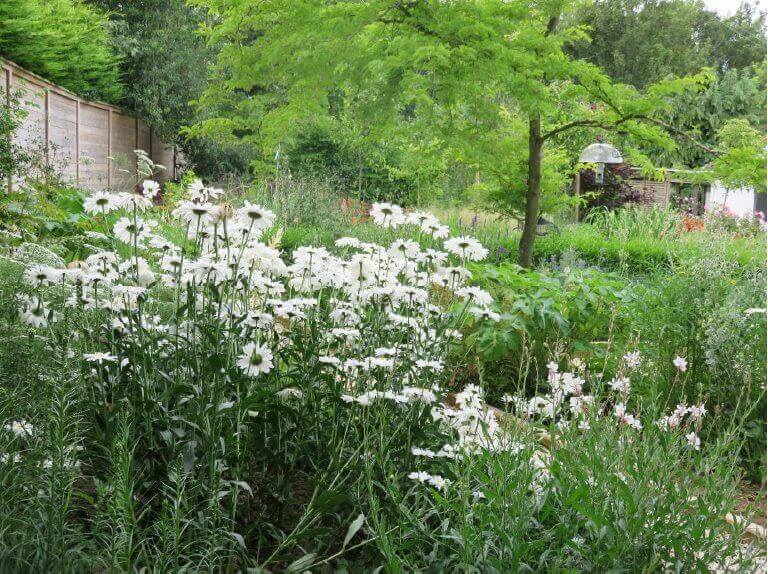11/09/2024 12:00 AM
Fencing is an essential aspect of any garden, serving as a boundary, a security measure, and often a decorative element.
However, traditional fencing can sometimes create barriers that disrupt local wildlife, hindering their movement and access to vital resources. As awareness of the importance of biodiversity grows, many gardeners are turning to wildlife-friendly fencing as a way to create harmonious spaces that benefit both humans and animals, whose habitats we share. This blog explores the concept of wildlife-friendly fencing and how it can help wildlife thrive in your garden.
What is Wildlife-Friendly Fencing
Wildlife-friendly fencing is designed with the needs of animals in mind. Unlike traditional fencing, which often prioritises human concerns like security and privacy at the expense of wildlife, this type of fencing considers the movement, safety, and habitats of various species. The goal is to create a boundary that still allows animals to pass through, find food, and seek shelter while protecting your garden.

Types of wildlife friendly fencing
Wooden fencing with gaps – wooden fencing with gaps in its design allows wildlife to move freely and is also great to pair with climbing plants which will additionally benefit and encourage wildlife.
Wooden fencing with holes – small holes in the bases of fences allow small mammals to move between gardens. Hedgehog highways can be created in wooden gravel boards or specially designed hedgehog gravel boards are available and can simply replace a normal gravel board underneath a fence panel.
Brick walls – nooks and crannies are ideal for small insects. If brick walls are low and increased privacy is required, fencing can be installed on top of a wall, benefitting both wildlife and the homeowner.
Wooden fencing on walls – attach a decorative panel to a wall and pair with climbing plants to take advantage of vertical space within your garden, and add more plant life for wildlife.
Choose wildlife friendly metal fencing – metal fencing like chain link is too small for animals to move through and often results in small mammals like hedgehogs getting caught, which results in injury and often death. Vertical bar fencing like bowtop railings offer hedgehogs space to pass between pales. Opt for wildlife friendly security fencing.

Benefits of Wildlife-Friendly Fencing
Promotes Biodiversity - Wildlife-friendly fencing can create corridors for animals to move between habitats, which is essential for maintaining biodiversity. Small mammals, reptiles, amphibians, and insects can travel through your garden, helping to pollinate plants, control pests, and maintain healthy soil.
Supports Pollinators - Pollinators like bees and butterflies often need access to various plants throughout their life cycles. A fence that can be used to support climbing plants can produce food and habitats.
Encourages Natural Pest Control - When you allow beneficial wildlife like birds, hedgehogs, and frogs to move through your garden, they can help keep pests in check. These animals feed on common garden pests such as slugs, snails, and insects, reducing the need for chemical pesticides.
Enhances Aesthetic and Ecological Value - Wildlife-friendly fences can be beautiful as well as functional. They often incorporate natural materials like wood, stone, or plants, which blend seamlessly into the garden environment. This not only enhances the visual appeal of your garden but also provides habitats and resources for wildlife.
Features of Wildlife-Friendly Fencing
Gaps and Passages - Incorporating small gaps at the base of your fence can allow animals like hedgehogs, frogs, and small mammals to pass through. These gaps should be around 13 cm by 13 cm—large enough for wildlife to move through but small enough to prevent pets from escaping. Metal fencing with paled designs will allow animals to pass without compromising on security.
Use of Natural Materials - Wooden fences, living hedges, and stone walls are excellent alternatives to plastic fencing. These materials provide shelter and food for insects, birds, and small mammals. For instance, a hedgerow can serve as a nesting site for birds and a habitat for insects.
Wildlife-Friendly Gates- Gates can be designed with the same principles in mind. Avoid solid gates that create an impenetrable barrier; instead, opt for slatted or vertical bar gates that allow small creatures to pass through.
Consideration of Height - The height of your fence can also play a role in how wildlife interacts with it. While a low fence may not deter larger animals like deer, it can allow smaller mammals and birds to nest and move freely. For areas where privacy or security is a concern, consider a higher fence with gaps or stepping stones to assist wildlife.

Practical Tips for Implementing Wildlife-Friendly Fencing
Plan Your Fencing Layout Carefully - Consider the existing wildlife in your area and plan your fence layout to accommodate their needs. Observe where animals tend to enter or exit your garden and place gaps or passages strategically.
Work with Your Neighbours - Wildlife doesn't recognise property lines, so working with your neighbours to create a network of wildlife-friendly fences can multiply the benefits. This approach can help create larger corridors for movement and a more extensive habitat area.
Maintain Your Fencing Regularly- Check your fence for damage or blockages that could prevent wildlife from moving freely. Clear away debris, ensure gaps are not obstructed, and repair any broken sections that might trap or harm animals.

Conclusion
Wildlife-friendly fencing is a simple yet impactful way to make your garden a sanctuary for local wildlife. By allowing animals to move freely and providing them with essential resources, you can help support biodiversity and create a thriving ecosystem right in your garden. Whether you're a seasoned gardener or just starting, embracing wildlife-friendly practices can lead to a more vibrant, balanced, and beautiful garden that both you and local wildlife can enjoy.
Start small by adding a few gaps in your fence or incorporating natural materials, and watch as your garden becomes a lively habitat for the creatures that call it home.
Related content
How to help hedgehogs in your garden
Creating a bird friendly garden